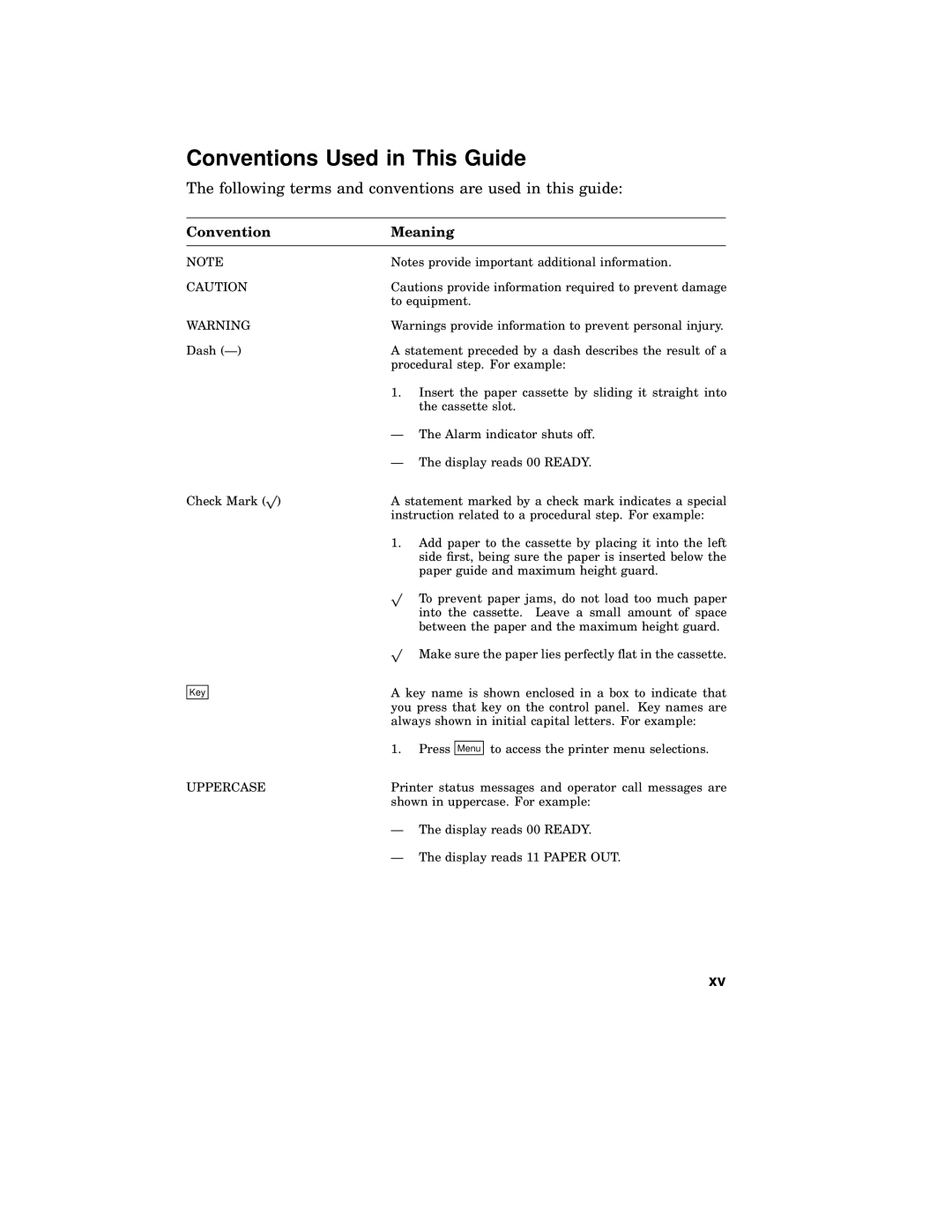
Conventions Used in This Guide
The following terms and conventions are used in this guide:
Convention | Meaning | ||
NOTE | Notes provide important additional information. | ||
CAUTION | Cautions provide information required to prevent damage | ||
|
| to equipment. | |
WARNING | Warnings provide information to prevent personal injury. | ||
Dash | A statement preceded by a dash describes the result of a | ||
|
| procedural step. For example: | |
|
| 1. | Insert the paper cassette by sliding it straight into |
|
|
| the cassette slot. |
|
| — | The Alarm indicator shuts off. |
Check Mark (p) | — | The display reads 00 READY. | |
A statement marked by a check mark indicates a special | |||
|
| instruction related to a procedural step. For example: | |
|
| 1. | Add paper to the cassette by placing it into the left |
|
|
| side first, being sure the paper is inserted below the |
|
| p | paper guide and maximum height guard. |
|
|
| To prevent paper jams, do not load too much paper |
|
|
| into the cassette. Leave a small amount of space |
|
| p | between the paper and the maximum height guard. |
|
|
| Make sure the paper lies perfectly flat in the cassette. |
|
| A key name is shown enclosed in a box to indicate that | |
Key |
| ||
|
| you press that key on the control panel. Key names are | |
|
| always shown in initial capital letters. For example: | |
1.Press
Menu
to access the printer menu selections.
UPPERCASE | Printer status messages and operator call messages are | |
| shown in uppercase. For example: | |
| — | The display reads 00 READY. |
| — | The display reads 11 PAPER OUT. |
xv
